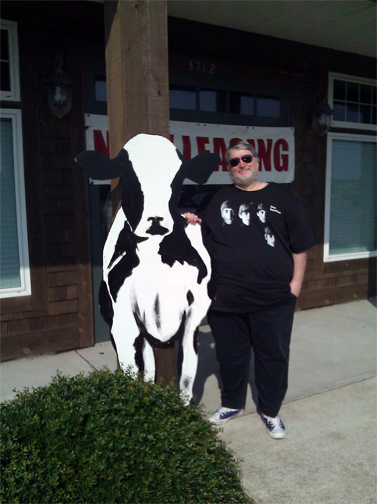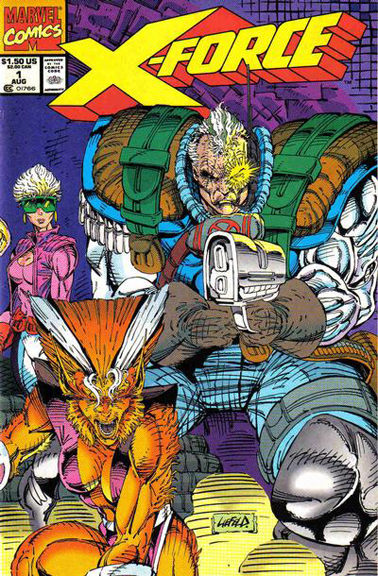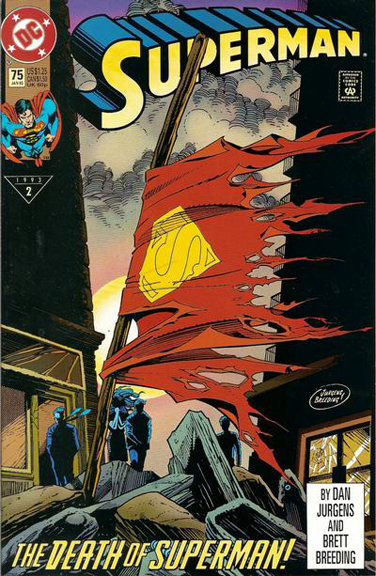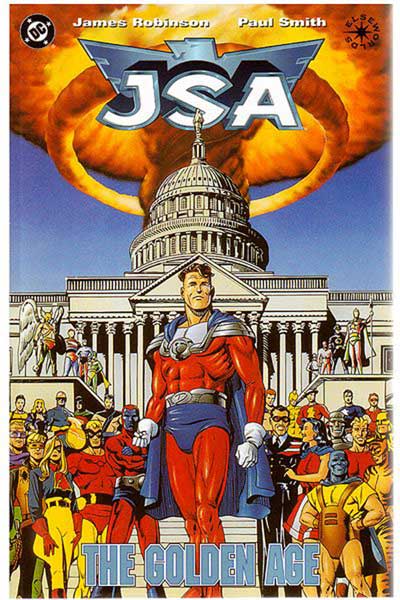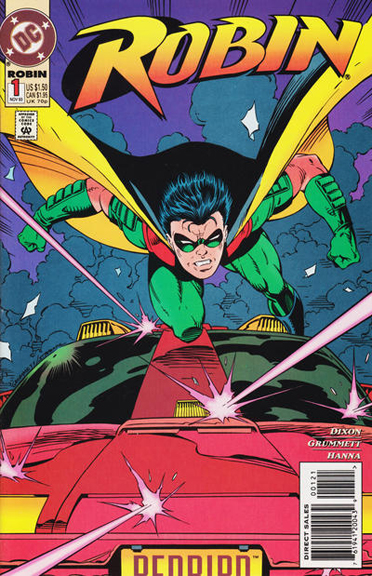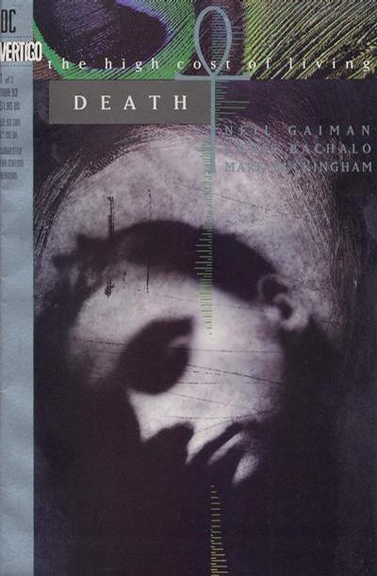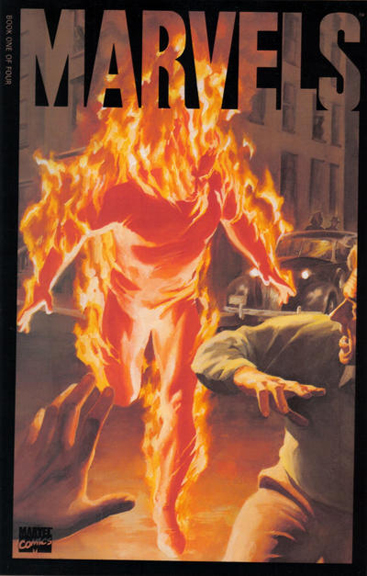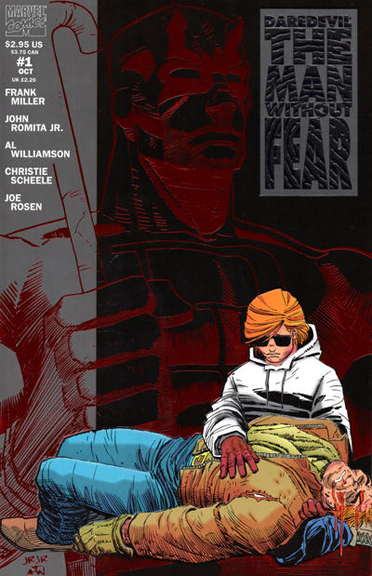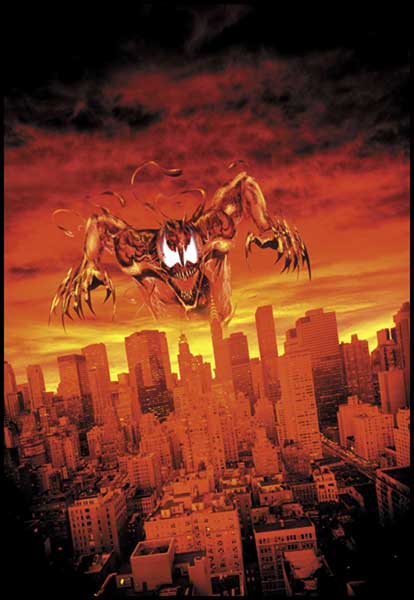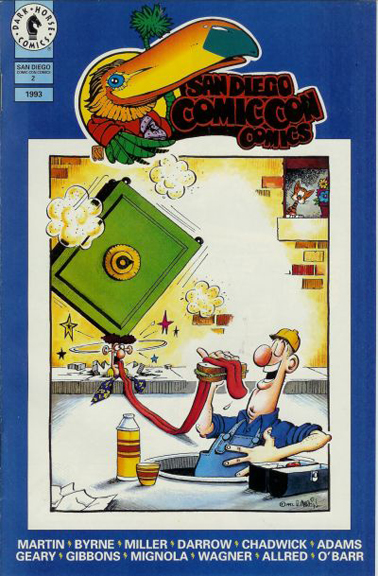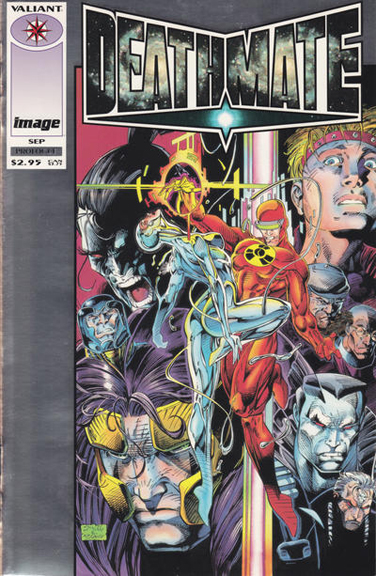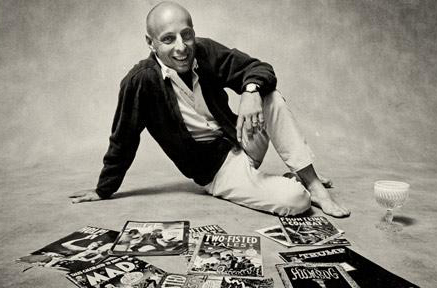KC COLUMN: IT WAS TWENTY YEARS AGO TODAY…
by KC Carlson
The other day, I was listening to the Beatles. (They were like Justin Bieber except there were four of them. And they weren’t annoying and wrote their own songs.) I was playing their classic album Sgt. Pepper’s Lonely Hearts Club Band, whose title song’s opening line is the title of this column. Which made me wonder what was going on in comics “twenty years ago today”.
Turns out, quite a lot.
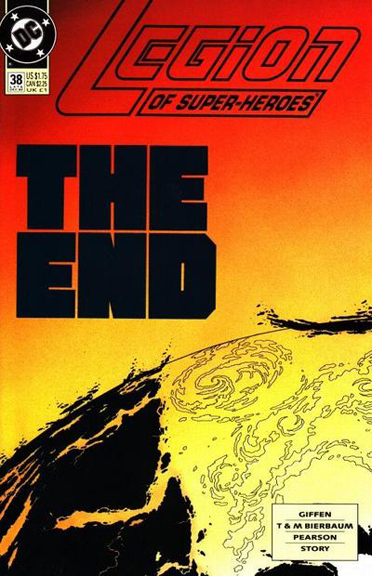
Legion of Super-Heroes #38, KC’s first issue, co-editing with Michael Eury. KC’s always found it amusing that his first issue as editor had “The End” on the cover.
First up, I was just back at DC Comics to take over editing the Legion of Super-Heroes books from the departing Michael Eury (now editor of TwoMorrows’ great Back Issue! magazine). I had previously worked at DC from 1989-1990, but I left because of some arcane corporate reasons that I still don’t understand today. In the interim, I came back to Wisconsin, wrote and edited some more Westfield Newsletters, and then spent five months “creating” Comics Retailer magazine for Krause, before getting “the call” from Mike Carlin.
THE BIG BAD BANG THEORY
1993 was the year the big crash in comic books began. That eventually ended up with the comic book industry having only one distributor and as many as 30% of all comic books going unsold. Under the old comic book distribution system, this loss would have been absorbed by the comic book publishers. But since the creation of the Direct Market several years earlier, which made the purchase of comic stock nonreturnable, the guys holding the bag this time around were the comic book shops, and thousands of them went out of business over the next couple of years.
Most of the comic book shops pointed fingers directly at the publishers for flooding the marketplace with very bad comic books at ever-increasing cover prices. The biggest wars were fought over so-called “incentives” with fancy gimmick covers. They were more expensive, just due to the holograms or shiny foil or unusual inks or die-cuts or fold-outs, and as the fad got out-of-hand, most all of these went unsold. Twenty years later, I bet it wouldn’t be too difficult to find case quantities of such long-forgotten “mega-sellers” as X-Men #1, X-Force #1, or The Death of Superman. The publishers thought they sold well, but to many comic shop owners, they were just the annoying boxes of comics cluttering up the backroom, as customers didn’t succumb, or at least as much as the retailer’s hoped.
JUST ANOTHER SLOW NEWS DAY: DC COMICS
1993 was also the beginning of the single-character Mega-Story. The event book crossovers that began in the 80s (such as Crisis on Infinite Earths or Secret Wars) beget “annual event” thinking by both Marvel and DC. By 1993, a big team-up plot wasn’t required, as solo character events were doing just as well, if not better. For DC, 1993 began with The Death of Superman, and just five months later, Bane broke Batman’s back in Knightfall. These two storylines completely overshadowed everything else at DC that year, including the regular Annuals Event Bloodlines (with the first issue charmingly titled Bloodbath). By the end of the year, Emerald Twilight debuted in Green Lantern, making a controversial change in the history of both title and character.
The DC book that flew under the radar that year was James Robinson and Paul Smith’s The Golden Age, an Elseworlds modernization of both the Justice Society and the All-Star Squadron that rang so true that it could have been DC canon with just a few tweaks. Another cult classic was The Flash, especially the “Return of Barry Allen” storyline by Mark Waid and Greg LaRocque. Mike Weringo would become the new artist with the following storyline, making it a fine time to be a Flash fan.
Also of note that year at DC was the spinning off of the supporting characters of the Bat-family. After a number of miniseries, Robin finally won his own series by the great team of Chuck Dixon and Tom Grummett. Catwoman was also given her own title, a spotlight of her own in the DCU for years (and other series) to come. And something bigger-to-come was teased in the Batman: Legends of the Dark Knight Halloween Special #1 by Jeph Loeb and Tim Sale. Their Batman: The Long Halloween three years later was a high point for comic miniseries. Lobo was also given his own ongoing title in 1993, after years of self-contained miniseries. Remember him? He was DC’s sole bad-ass at the time, before everyone got a bad attitude.
1993 was also the birth of two major favorite DC imprints. Vertigo was first formalized in 1993, although editor Karen Berger’s uniquely quirky and frequently dark mystery and supernatural comics had been a part of DC since the late 1980s. The focal point of the launch was Neil Gaiman and Chris Bachalo’s Death: The High Cost of Living, a spin-off of the hugely popular Sandman series. Also debuting in 1993 was the beloved Milestone Comics, which provided some much-needed diversity to superhero comics. Such titles as Static and Icon not only featured heroes of different backgrounds and cultures, who contrasted welcomingly with DC’s white-bread stable, but the books also made leaps forward in storytelling style, subject matter, and coloring technology. DC also went MAD in 1993, as the long-running humor magazine was absorbed into DC after the 1992 death of publisher William M. Gaines.
MARVEL: WHAT THE–?!
Over at Marvel, expansion was also the name of the game, as seemingly every superhero franchise grew by leaps and bounds. Many titles were not exactly “ready for prime time”, as a large influx of new (and untested) creators made their debuts and new titles didn’t stick around for long (like Secret Avengers and the 2099 books). Conan the Barbarian was canceled at Marvel with issue #275, and The ‘Nam was canceled with #84.
In the early 90s, the biggest franchise in comic books was still the X-Men titles. Mutants outsold practically everything, leading to dozens of X-titles and spin-offs during this period, many of which were multi-titled crossover events. Everybody took notice, and soon, many characters became franchises at both Marvel and DC. Those with multiple titles included Batman, Spider-Man, Superman, the Punisher, Justice League, and the Avengers. By the way, Marvel actually preceded DC in the whole single character/series Big Event sweepstakes, most notably in the Mutant franchise, but DC ended up with most of the press with The Death of Superman and the breaking of Batman in Knightfall. Comics, like life, is not always fair.
The high point for Marvel in 1993 was the acclaimed Marvels limited series by Kurt Busiek and Alex Ross. It brilliantly took the rough ‘n’ tumble early Marvel chronology, tidied it up, and made it important (and modern) for an entire new generation of comic readers. It’s such a lyrical portrait of the era, it practically sings. I’m reminded that I’m long overdue for a re-read.
Also excellent is the Daredevil: The Man Without Fear limited series by Frank Miller and John Romita Jr., which retells the origins of both Matt Murdock and Daredevil with brand-new insights. In his own book, DD had a “Fall From Grace” which historically turned out to be one in a series over the coming years.
Marvel was still (over?-)reacting to the loss of their key artists who defected and formed Image Comics in 1992, and many of their books seemed to deliberately ape the darkness of many of the Image titles. At Marvel, characters like The Punisher and Carnage were suddenly everywhere, the latter being the star of that year’s Spider-Man Event — the 14-part Maximum Carnage. But don’t always believe what you see. With all those bloody tendrils, the covers to Maximum Carnage look horrendous (at least to me), but writer J.M. DeMatteis apparently did not like the increasing darkness of super-hero books. (It’s not for nothing that this era is frequently called The Dark Age of Comics.) It’s said that he did not want this assignment unless he could tell a story that would air his opinions about mass-murdering super-villains. Based on this information, this just leapt to the top of my Never Read Before, but Should Read Now list. (I was too busy editing comics at the time to keep up with ALL the mega-stories of the day. Besides, after 8-10 hours a day of editing comics, reading comics was frequently the last thing I wanted to do.)
At Marvel in 1993, Mockingbird (West Coast Avengers), Mr. Fantastic, and Harry Osborn all died. (Notably, they’ve all returned since.) Cable, Deadpoool, and Gambit got their own titles, and Wolverine had his Adamantium skeleton ripped out of him by Magneto. Ow.
ELSEWHERE… (NOT A DC IMPRINT)
1993 was something of an end of an era for some publishers, as Eclipse Comics ceased publishing regularly after First Comics had faded away the previous year. However, Bongo was born with the success of The Simpsons in comic books, and Gladstone Comics and their line of Walt Disney comic books returned after a period of reorganization. In 1993, Dark Horse Comics began publishing Star Wars material (in Dark Horse Comics #7), which eventually became a mini-industry for them. Dark Horse also created their own superhero universe, Comics Greatest World, which never really caught on. Mike Mignola’s Hellboy debuted in 1993 in an off-hand way, as he appeared in a convention giveaway before guesting in John Byrne’s Next Men. Additionally, Jim Shooter started up Defiant Comics in 1993 after his departure from Valiant. Also in 1993 is the debut of the ill-fated, and best-forgotten, Deathmate crossover between Valiant and Image. One of 90’s comics absolute low-points, as interest was huge but the immense shipping delays (all on the Image side) caused massive problems for retailers.
The publisher to watch in 1993 was Image. Founded the previous year (in conjunction with Malibu Comics, for administrative, production, distribution, and marketing support of their early titles), Image and Malibu’s combined sales were strong enough to gain almost 10% of North American market share, temporarily passing DC Comics for the #2 publisher slot in 1993. That made Image financially secure enough to break away from Malibu that year. However, distributors and retailers (if not readers) were starting to take notice of how frequently Image shipped titles late. For now, most of the industry looked the other way. But eventually, retailers would get caught with thousands of unsold copies of their very late titles, ordered in large quantities to meet demand that had disappeared by the time the books actually arrived. Another factor in the closing of many comic book stores.
In the meantime, Malibu launched the Ultraverse in 1993, which was eventually bought and absorbed into the Marvel Universe (and then forgotten). Turned out that all Marvel wanted was the company’s superior computer coloring technology.
R.I.P.
In 1993, the comics industry lost Harvey Kurtzman at the age of 68, inspiring an annual award of comic book excellence named in his honor. (The Wizard Fan Awards were also created in 1993.) Other longtime comic creators who passed away in 1993 included Ross Andru (Spider-Man, Metal Men, Wonder Woman, DC war books), Gaylord DuBois (hundreds of stories for Dell and Gold Key, including Space Family Robinson and Turok, Son of Stone, and John Stanley (Little Lulu, Nancy and Sluggo, Melvin Monster).
WHAT HAVE WE LEARNED ON THE SHOW TONIGHT, CRAIG?
Thinking back, some of these events are so fresh in my mind it seems like just a few years ago, but in the ensuing two decades, there have been several new generations of comic readers and customers. Some haven’t even visited a comic store, getting their fixes at bookshops or online. Many have no idea of this recent history, making me want to tell the stories as cautionary tales. Those who don’t remember history are condemned to repeat it, as the wise man said.
The superhero publishers are once again counting on limited cover variants to boost sales. They’re pumping out titles in an attempt to boost quantity over quality for rack space, either spinning off doomed books in an attempt to widen franchises (sorry, JLA’s Vibe) or putting out 18-24 issues of popular titles a year, by a team of creators (as opposed to a creative team) to snag more dollars.
We don’t seem to have learned from the distributor wars, since the emerging digital market has only one significant distributor in a near-monopoly position. Although it appears that digital brings in new readers without significantly damaging existing print sales, some direct market retailers are frightened beyond logic by the concept, and making decisions out of fear is never a good idea. Besides, in many cases, the digital copy costs more than the print edition for in-store subscribers.
Then again, by chasing the new without considering the value and lessons of the old, choices may be made too hastily. To keep the comic industry and books we love going requires patience and smart thinking, which includes considering the lessons of history.
______________________________
KC CARLSON: Remembers pitching my idea for a great incentive cover. I wanted to print a comic book cover on one of those Magic Slate things. You know, the toy where you draw a picture with a stylus, and then when you lift up the magic sheet, the picture disappears! Unfortunate comic book readers who lifted up their magic sheet would then have to go out and buy another copy to have a “mint” comic book. We could have sold millions!
I remember a lot of people at DC wouldn’t talk to me (or even look at me) for a long time after I said this out loud.
Special thanks to John Wells. The home version of this column is on the way to him.
WESTFIELD COMICS is not responsible for the stupid things that KC says. Especially that thing that really irritated you.
Classic comic covers from the Grand Comics Database.
